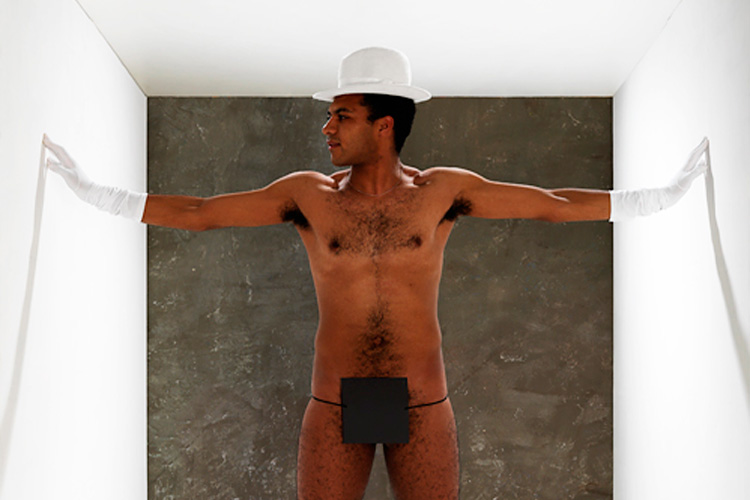
STRAW MASSACRE OF A COUNT-TURNED-BEAR
‘About forty years after Straw Dogs, in the Belarusian film called Massacre it is straw that kills, too. A straw room chokes an intruding Russian general, its yellow walls moving, besieging and pushing him out. Just like in Straw Dogs, the hero won’t say a word about his anguish’, — write Andrej Rasinski

Valancin Akudović about Belarusian ‘partisanka’
The notion of partisanka was first voiced ten years ago in the first issue of the almanac «pARTisan». It described not only the state of Belarusian art at that time but also the certain fighting strategy of man for the right to have personal cultural autonomy. The Belarusian philosopher Valancin Akudović was one of the people who supported this «partisan» challenge and, with time, his Ttheory of Absence has become one of the fundamental ideas of partisan philosophy. Therefore, while attempting to answer the question what is partisanka now and what future does it have, pARTisan has addressed Valancin Akudović.

A Stroll along Minsk Following Derrida
My vision is that of a stranger, a child, an individual, who is unable to comprehend what he sees and is scared of architectural ghosts, just like Marcellus was. I would like to discuss the functions of architecture and sculpture in creating a communist state’s auto-mythology, as well as their impact and status in Minsk now that it is a decade since the collapse of the USSR and about a decade since Derrida wrote Les Spectres de Marx.

Valancin Vinahradau. The Taste of Life
Valancin Vinahradau is a poet with purely poetic energy, an avalanche of images, rhythms and all kinds of associations. He created his own world of unique and exceptional beauty, full of a complex mixture of metaphors and mythological images. He possesses the highest form of symphonic musicality, which in film production echoes with a ‘cyclic’ form, where such themes as the limit of human abilities, a change of consciousness, a subconscious human fear of the surrounding world and an individual who does not fit into society are found over and over again.

Belarus in in the 54th Venetian biennale: archive!
In 2011 Belarus firstly took part in Venice Biennale. The results of this project were actively discussed and criticized by Belarusian independent art community. Nevertheless, it was clear that the first important step towards the integration of Belarusian contemporary art in a global context was done. Artists and curators were optimistic about the future. But when the next Biennale for Belarus will happen, it’s no longer clear. Does it mean that the official Belarusian Culture played long enough in Venice, or simply missed the deadline? We don’t know. We can only remember the last experience and publish the interviews of Artur Klinau, a participant of the Belarusian project in 54 Venice Biennale.

On the Ruins of Your Own Body
The hackneyed cliche, ‘A scar makes a man more handsome,’ determines what degree of bodily injuries is found acceptable, as a mark of courage and manliness. A scar on a woman’s face or body is a mark of ugliness. Society gives two opposite verdicts on one and the same thing.
J. L. Nancy summed up a complex relationship between the self and the body in a paradox, ‘I never know my own body, nor do I ever know myself as a body… But I know others as bodies’…
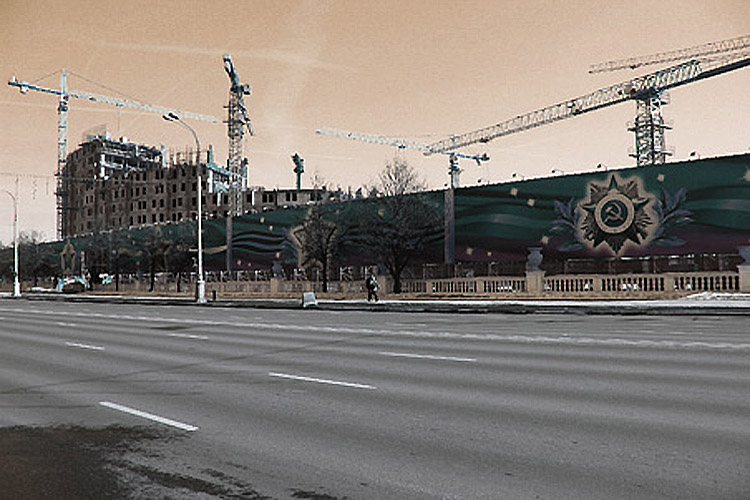
The City of the Gods
This article was written when the construction of the hotel «Kempinski» in Minsk only was planned on the territory on Kastryćnickaja Square. This plan was refused, but the project continued in another place — near the Horkaha Park on banks of Svislać river. So the idea of a green perspective of Minsk Avenue was completely buried . Are Martians already in the city?
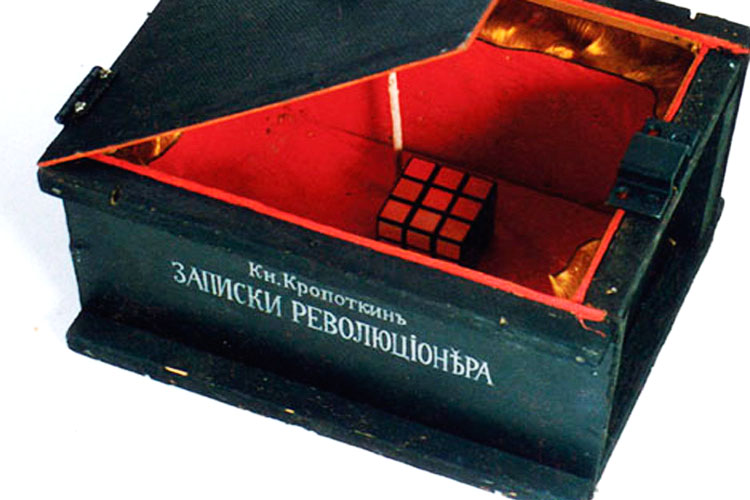
KIM
Kim Chadziejeu or just Kim is the legendary dissident and unique intellectual Minsk Soviet times. It’s a ‘living encyclopedia’ mentor of many talented young Belarusianmen and women that, like gnats, consulted around of him during the 60’s, 70’s, 80’s, 90’s of the last century.
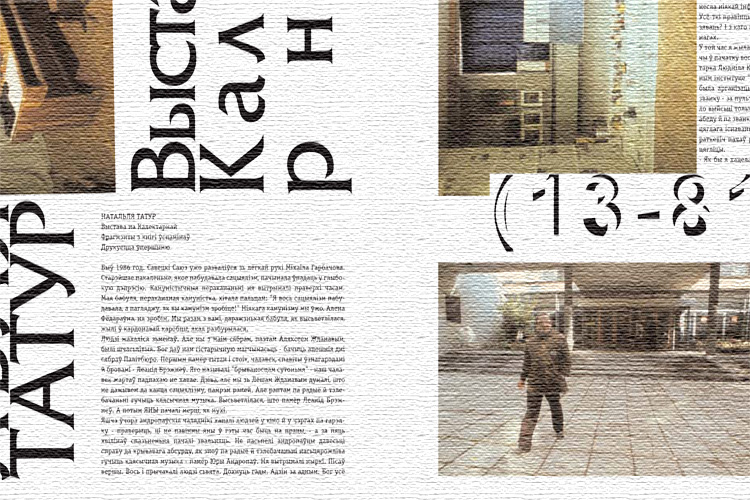
The Exhibition on Kalektarnaja Street
Natalla Tatur tells the story of the legaendary exhibitition on Kalektarnaja Street in 1987, one of the first exhibitition of Belarusian non-official artists.
The participants were Vital Ražkoŭ, Andrej Plasanaŭ, Todar Kopša, Artur Klinaŭ and Alaksiej Ždanaŭ.
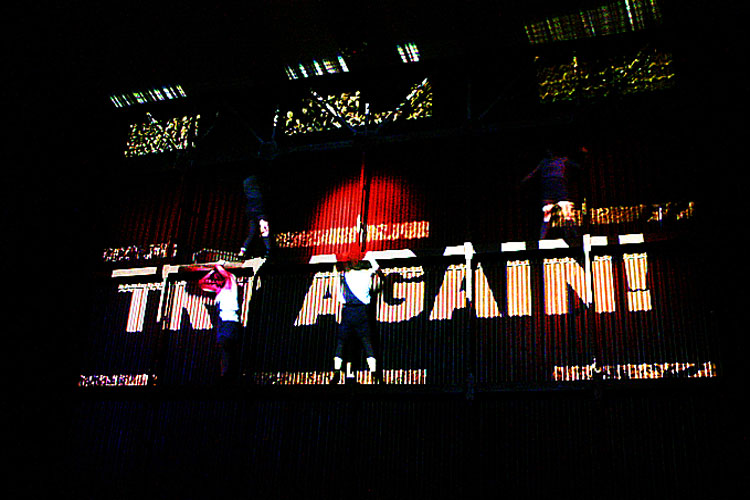
Game Is NOT Over!
‘Afterwards’ (a reality show for the theatre in one act, by Viaćasłau Inaziemcau, InZest Theatre).
The subject of the person and the system is brought up in most of the performances staged by the InZest plastic movement theatre, since it came into being in the early 1980s as a protest against the system. The company have made the game and carnival as a way of reviving dead rituals their guiding principle. Resistance to the system still goes on, but the ‘baby’ now realises that belonging to it is the main rule of the game. Human body is a system, too. It restricts the individual’s freedom, imposing desires and directing one’s will. What am I and why am I, then? Afterwards is woven of infinite political, social, philosophical and religious questions.

Ihar Cišyn: Stalin Kaput
uraś Y presents his conversation with Ihar Cišyn, an outstanding postmodern Belarusian artist and conceptual story writer, who also experiments in installations. In his interview entitled Stalin Kaput Juraś Y appeals to Cišyn’s story Gog and Magog.
Discussing partisan struggle in Belarus, Ihar Cišyn airs his view that the Belarusians have always lived a life of partisans, so it is only natural that non-conventional artists feel as if they were secret agents of the West whose mission is to alter the local cultural condition. But if the government goes on to support and guide experimental art, there is a danger that it might cease being experimental and turn into officialese.

Culture as a Version
Culture is a version. Every individual and every nation have their own version or even a few versions that can either agree or clash. The Belarusians for instance have several cultural versions varying in their complexity and consistency.
There can be native and alien cultures. Their versions emerge, grow, develop, maintain themselves and vanish either in the course of nature or driven out by other versions. A war of versions is not a rare thing to happen.
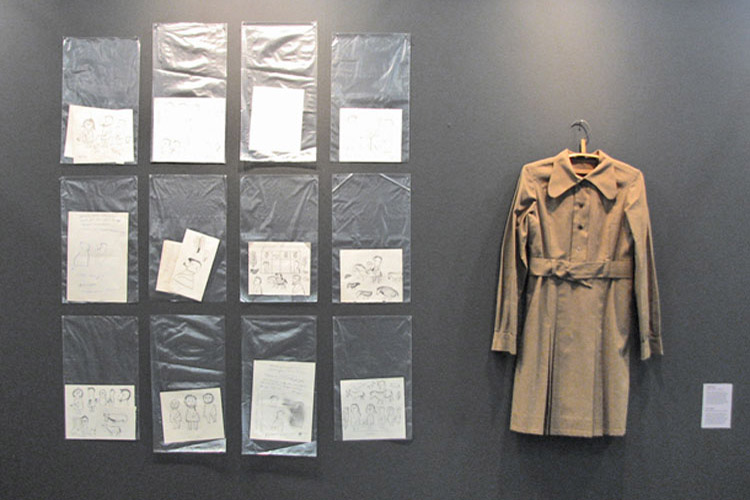
‘She Cannot Say Heaven’ Art Project
The project She Cannot Say Heaven by Gallery contemporary art ‘Y’ was represented at International Contemporary Art Fair ARTVILNIUS’11 (13.07.2011 — 17.07.2011), where the project was awarded with the nomination ‘The Best Exposition by Foreign Gallery’. On July 28, 2011 the project was presented in Minsk, in Gallery ‘Y’ and become a cause of active discussion in Belarusian art community. What was the reason for Gallery’s success in Vilnius? And why this project was awarded with the attention of the international art community?
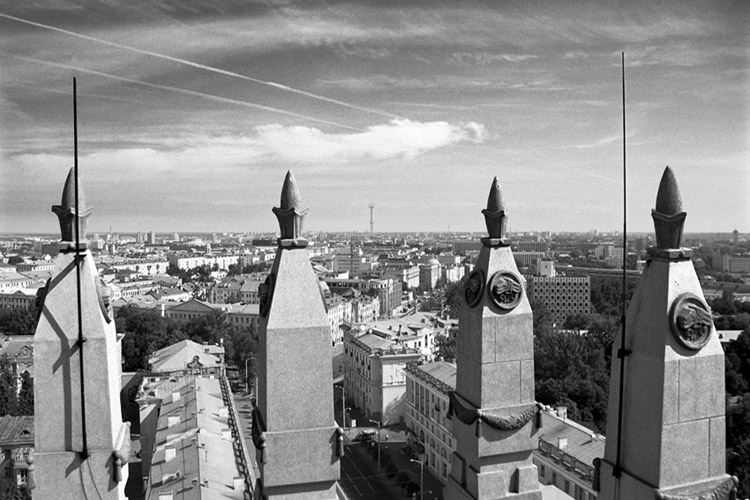
Artur Klinau: A Project to Build an Ideal City
Interview with Artur Klinau, an author of A Visual Poem The Sun City of Dreams and A Little Guidebook of the Sun City about his project The City of the Sun’2, which could make Minsk one of the most attractive touristic city.

Zero Radius. Art of the 00’s Onthology
In March in Minsk, there was an event which for the whole month was a major focus of attention for the art community of the city.The curators of the research project Zero Radius. Art of the 00’s Onthology talk about the exhibition




